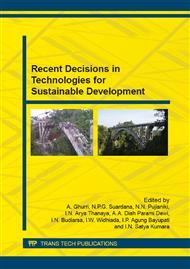p.300
p.309
p.313
p.319
p.325
p.331
p.337
p.343
p.349
Design and Simulation of Five Fingers Gripper for Dexterous Pick-Up Various of Components
Abstract:
In this paper, the authors describe and demonstrate how a Five fingered gripper can be designed and simulated to provide both gross motion and fine motion to the fingers. Satisfactory motion responses for the finger simulation are achieved. The fine motion including force feedback and the gross motions, which orientate the fingers into their approximate configuration is provided by an advance PID control strategy. The fingers are to be controlled in a manner which mimics the kinematics and dynamics of the five fingers of a human hand. This mimicry is required to design the correct motions necessary to handle engineering components. In order to evaluate the design philosophy and capability of the five fingered gripper, a challenging assembly process has been identified. The five fingered gripper assembly was built using Solidworks software tool, and it’s mechanical assembly representation was established in SimMechanics. The advance PID control is very effectively used to control the trajectory of the fingers. The simulation results have been demonstrated that the radius of finger movement is achieved in stable response. The signal error towards closed less than 1% which it indicates the response dynamic system response is stable.
Info:
Periodical:
Pages:
325-330
Citation:
Online since:
July 2015
Keywords:
Price:
Сopyright:
© 2015 Trans Tech Publications Ltd. All Rights Reserved
Share:
Citation:


